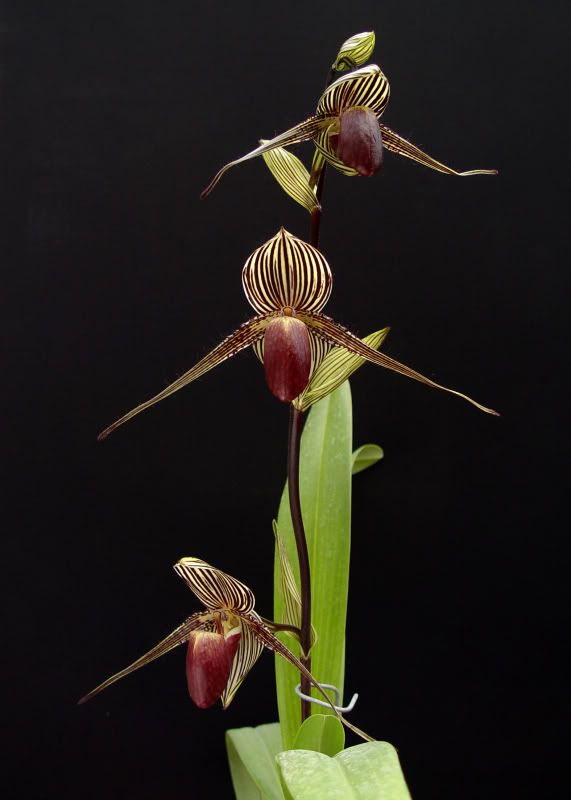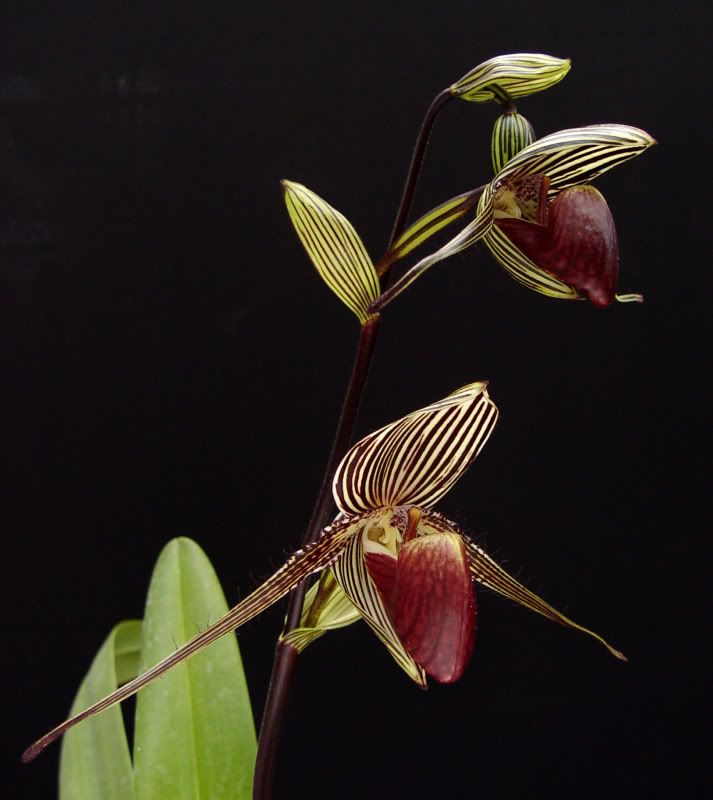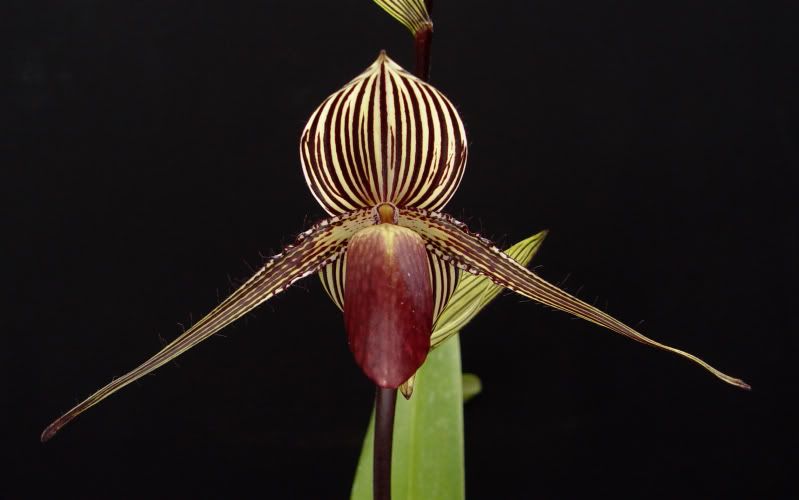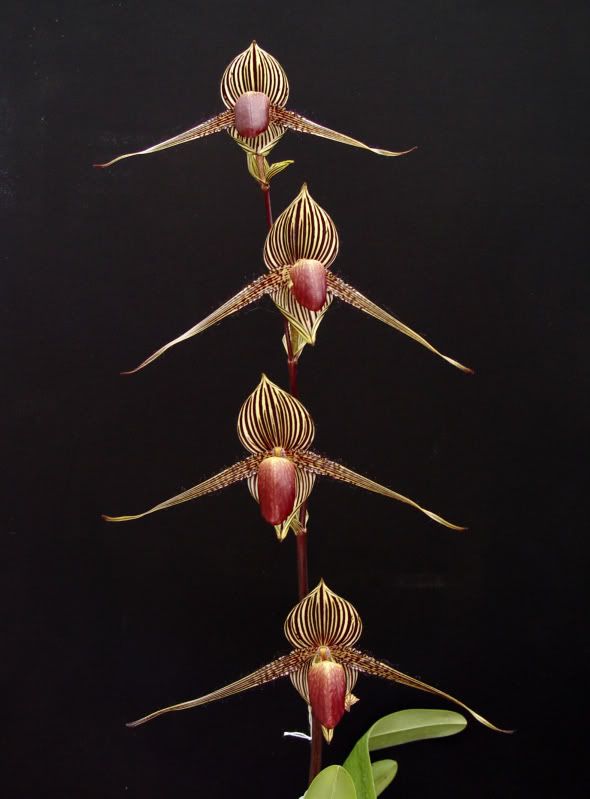Very impressive. How old is this plant, i.e. how many years out of flask? Like Rick, I'm also interested to know just how big the cohort is for this cross. Seems to me that big quick blooming Roths are still stastical anomalies but these anomalies are growing more frequent from generation to generation. As some one with a little genetics education I find the subject of inheritance very interesting.
Do you think, with continual selective breeding, that in the future we may have Roths that bloom within a year or two out of flask like some of the Brachys? Granted, Brachys are tiny and Roths threaten to take over entire green houses.
I have a theory, sustained by having watched people growing wild collected plants

Many called the phenomenon "jungle vigor", which does not exist without any explanation I think.
Two facts, the plants have a min/max range of all elements where they are healthy. Let's say as an example Mn between 800-1400 ppm, but it could be nickel, chromium, mercury, or whatever has not yet been investigated...
A fresh jungle plant in perfect health has 2 things:
- Proper loads of everything required, maybe on the higher range. If 800-1400ppm is the correct range, maybe the fresh collected plant is 1300
- A lot of microorganisms and others that release some amino acids, IBA - there were references somewhere on Internet about a research on paphs and bacterial symbiosis, not fungal... and many other organic compounds that are not identified. There was another different study here:
http://www.actahort.org/members/showpdf?booknrarnr=766_39
So it could be two things :
- When we remove the jungle plant from its soil and grow it in a pot with our fertilizer, maybe we starve the plants slowly. So the healthy plant at 1300ppm Mn will slow down the growth until the plant will be 500-600 ppm or below, and be stunted...
- The bacterias/fungi in the roots depends for sure on the environment in the wild. They survive for a while and supply correctly the plant, and when they die, we cannot replace them, and the plants slow down.
Believe it or not, about half of the huonglanae I posted last year have a complete big mature growth right now... In Europe I was happy to get such a growth in 2-3 years. The fresh plants are throwing a leaf a month approximately too.
Rothschildianum, I always dislike the way people grow them. They are too yellow to my taste, and I have seen many wild roths in Sabah, they had first sometimes nearly black leaves, apart from some exceptions, second they were growing like crazy...
That the plants takes many years to bloom from flasks means two things:
- We do not know their optimum requirements, but sometimes an individual or a group of plants will have it and grow like crazy.
- Maybe the opponents of Knudson were right, and the asymbiotic raised seedlings are not "normal"...


I manage tissue culture lab for a living, and it is my thinking that many labs produce green things in the flasks that grow too slowly compared to what they should. To overcome that I have to add amino acids, some vitamins, organix compounds here and there... In a recent Orchid Digest, one paper about a dracula hybrids, the seeds that sprouted in the greenhouse were blooming when the seedlings from asymbiotic culture were barely of deflasking size...
Incidentally, I bloomed several roths after 3-4 years out of flasks maximum, using fertilizer and a peptone type, but I do not recommend that, because the plants are far more susceptible to pseudomonas...
I think that now we grow our plants better than 25 years ago, so they bloom earlier, and maybe in 10 years when we will have a better understanding of their needs, they will grow extremely quickly. It is more that than a line breeding story.











